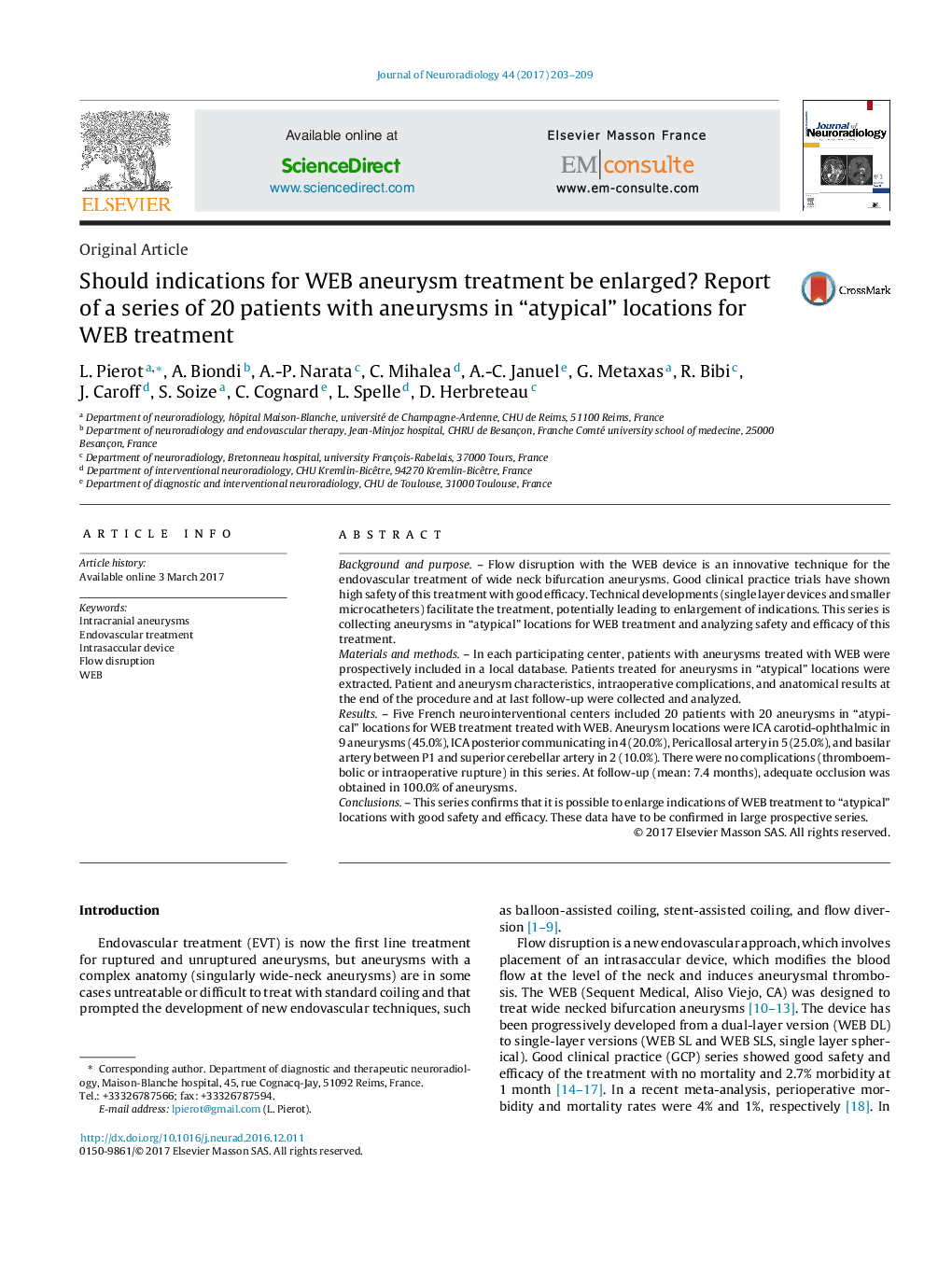| Article ID | Journal | Published Year | Pages | File Type |
|---|---|---|---|---|
| 5726980 | Journal of Neuroradiology | 2017 | 7 Pages |
Background and purposeFlow disruption with the WEB device is an innovative technique for the endovascular treatment of wide neck bifurcation aneurysms. Good clinical practice trials have shown high safety of this treatment with good efficacy. Technical developments (single layer devices and smaller microcatheters) facilitate the treatment, potentially leading to enlargement of indications. This series is collecting aneurysms in “atypical” locations for WEB treatment and analyzing safety and efficacy of this treatment.Materials and methodsIn each participating center, patients with aneurysms treated with WEB were prospectively included in a local database. Patients treated for aneurysms in “atypical” locations were extracted. Patient and aneurysm characteristics, intraoperative complications, and anatomical results at the end of the procedure and at last follow-up were collected and analyzed.ResultsFive French neurointerventional centers included 20 patients with 20Â aneurysms in “atypical” locations for WEB treatment treated with WEB. Aneurysm locations were ICA carotid-ophthalmic in 9Â aneurysms (45.0%), ICA posterior communicating in 4 (20.0%), Pericallosal artery in 5 (25.0%), and basilar artery between P1 and superior cerebellar artery in 2 (10.0%). There were no complications (thromboembolic or intraoperative rupture) in this series. At follow-up (mean: 7.4Â months), adequate occlusion was obtained in 100.0% of aneurysms.ConclusionsThis series confirms that it is possible to enlarge indications of WEB treatment to “atypical” locations with good safety and efficacy. These data have to be confirmed in large prospective series.
